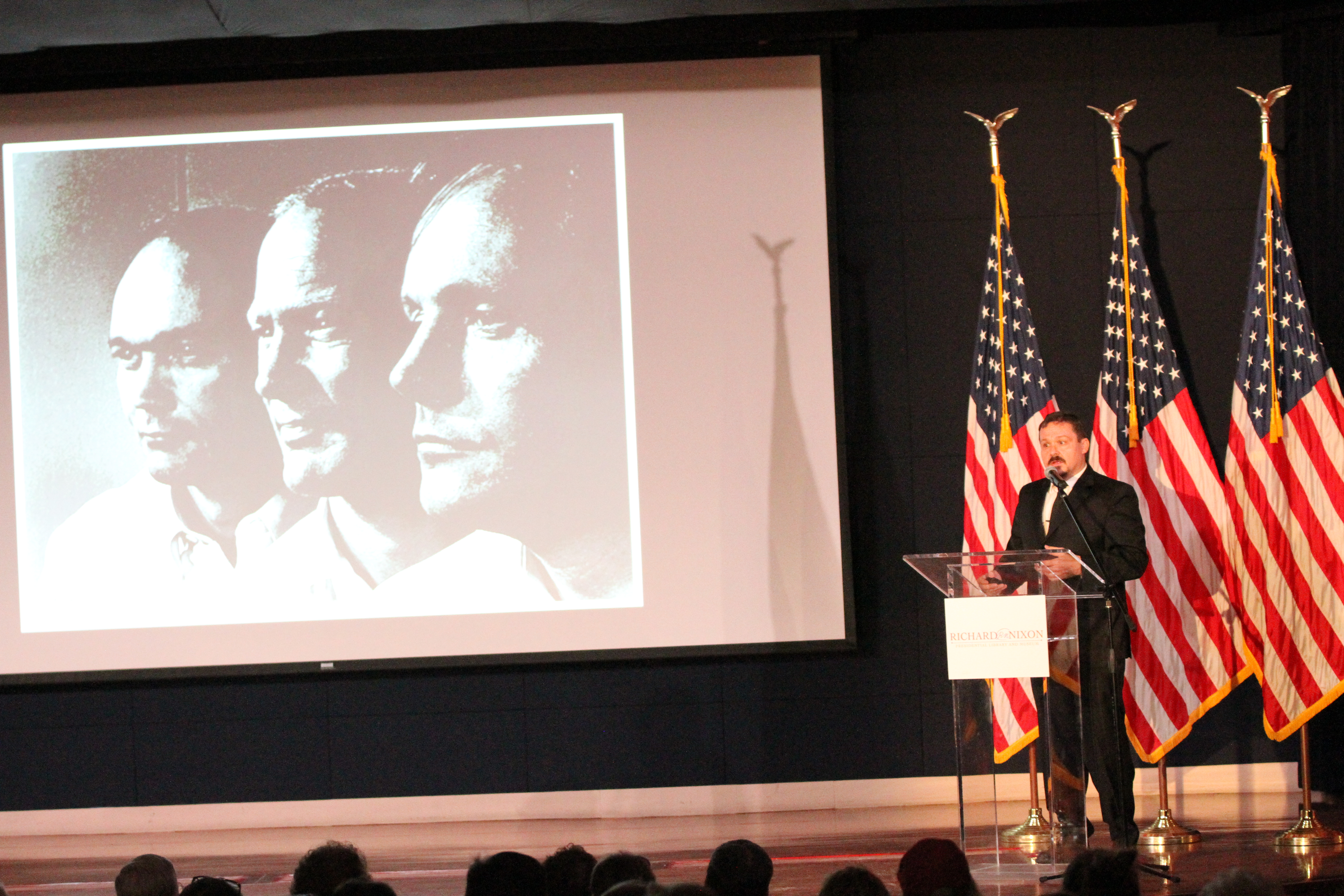Francis French is an author and expert on space travel. (Richard Nixon Foundation)
July 22, 2019
Yorba Linda (Nixon Library) – Between the short interval of four years — 1968 to 1972 — twenty-four astronauts had traveled on missions to the moon. What made these Americans qualified to defy gravity and travel 240,000 miles on an intra-galactic mission?
It takes calm, reasoned people, who can endure physically and mentally demanding situations, explained Francis French, a space travel expert who led a seminar as part of “Earth to Moon,” the Nixon Presidential Library’s 50th anniversary commemoration of the moon landing, presented by AT&T on Saturday, July 20.
Those NASA chose to participate in the program were “not swaggering jet jockeys,” as reminiscent of the 1980s action classic “Top Gun.” They were principally academically accomplished engineers and test pilots.
French gave the audience a profile on each of the three Apollo 11 astronauts — Neil Armstrong, Buzz Aldrin, and Michael Collins — and how they came to lead America to its new frontier.
“This was the real Neil Armstrong,” French said as he projected an image of Armstrong poring over aerospace engineering drafts. “He wanted to understand aircraft, not just fly them.”
Fascinated with aviation since a child, Armstrong was erudite in his craft. His study of aeronautical engineering at Purdue University, interrupted by service as a U.S. Navy aviator during the Korean War, preceded his commission as an experimental test pilot.
In the early 1960s, he was in the second group of nine chosen to take part in the nascent space program.
As in the case of the other Apollo 11 astronauts, Armstrong had previous experience in space. He commanded the Gemini 8 mission in March 1966, complications of which forced his spacecraft back to Earth 10 hours after liftoff. Nevertheless, his calm and courage under pressure impressed NASA administrators.
Michael Collins was a graduate of the United States Military Academy. Also a test pilot, Collins was among the third group of astronauts selected to participate in the space program. Also a veteran of Project Gemini, he participated in its tenth mission, completing orbital rendezvous and two space walks.
Edwin “Buzz” Aldrin was also a graduate of the United States Military Academy and a pilot, though not a test pilot like Armstrong and Collins.
A Korean War veteran, he distinguished himself among the group as an academic, receiving his doctorate in engineering from the Massachusetts Institute of Technology. His expertise was choreographing walks and other extra-vehicular moves in space. According to French, Aldrin became highly respected in NASA for finding a solution to these activities by coordinating his movements while tethering his body to ropes.
French explained that an unmanned Soviet space’s craft orbit of the moon in September 1968 caused NASA to become bolder to beat their Soviet counterparts in the space race. Over the next year, the agency launched five Apollo missions, beginning with Apollo 7 in October 1968, culminating in Apollo 11 in July 1969.
The Apollo 11 astronauts had distinct roles. Armstrong would be commander of the mission, and pilot the fragile lunar module, and Aldrin would supply assistance with coordinates for landing. While the two landed on the moon, Collins would remain in lunar orbit as pilot of the command module.
The mission to the moon wasn’t without challenges. While Armstrong and Aldrin made their approach to the moon they nearly ran out of fuel, while trying to navigate their landing away from craters on smoother terrain. They were successful, but missed their landing spot by four miles.
Asked later by people what it was like to walk on the moon, Armstrong was more impressed with his ability to land the lunar module. According to French, Armstrong likened it to a difficult landing on an aircraft carrier. It was much easier to walk down the ladder on to the deck.
French acknowledged that while Armstrong and Aldrin are more notable historical figures for setting foot on the moon, Collins piloting the space ship that brought the crew back to Earth had the most enviable job.
In orbiting the moon and having a view of Earth and the whole galaxy, “Collins in many ways had the best seat of all.”

